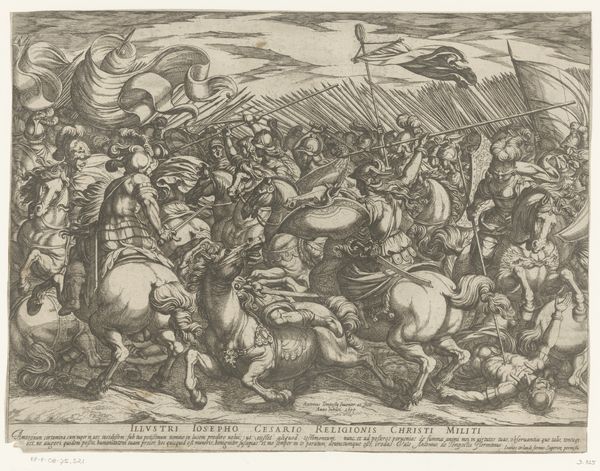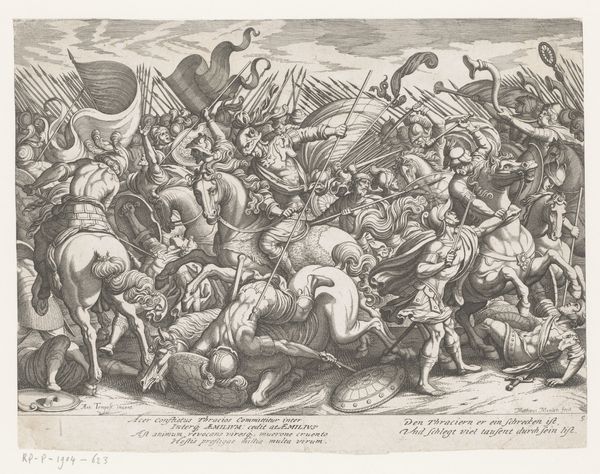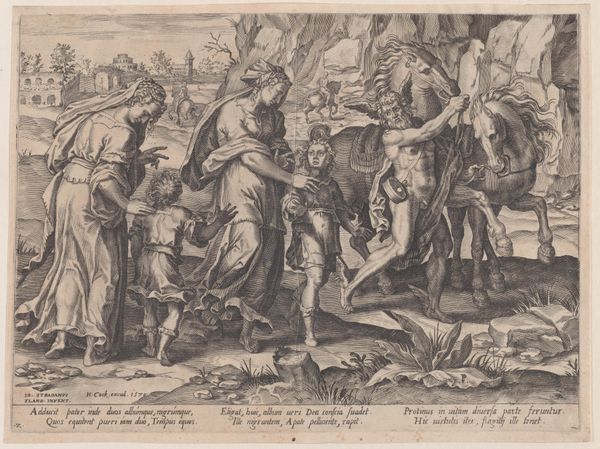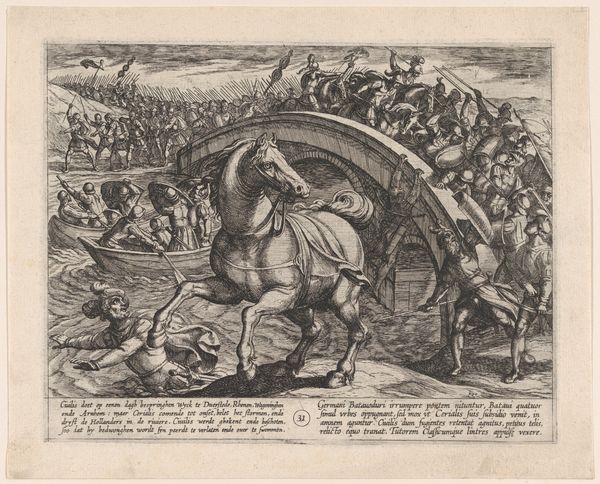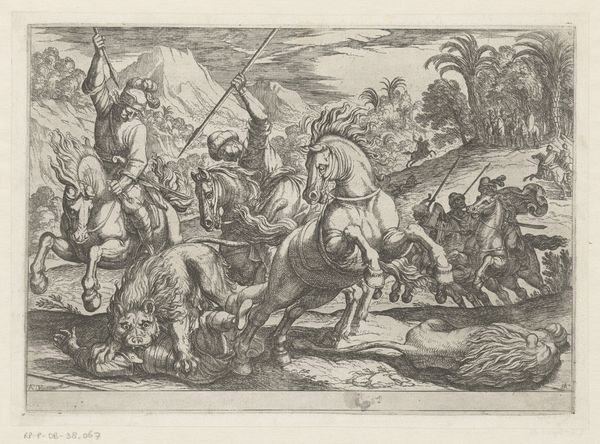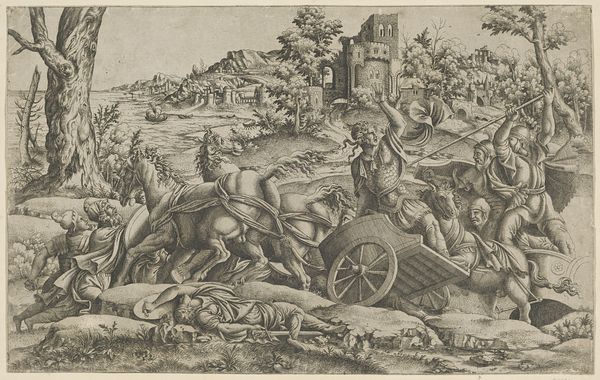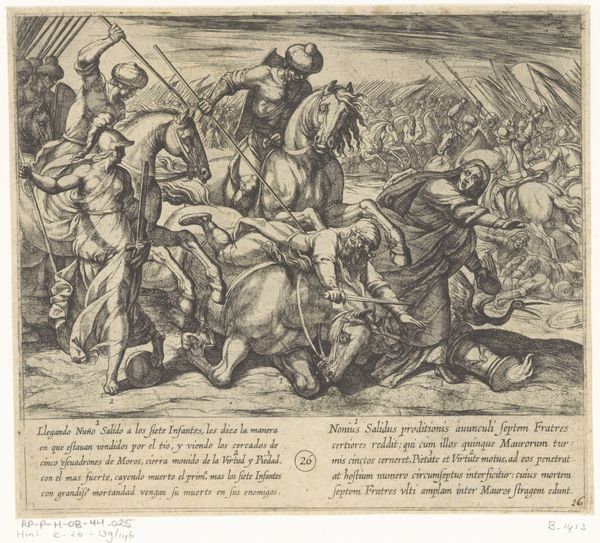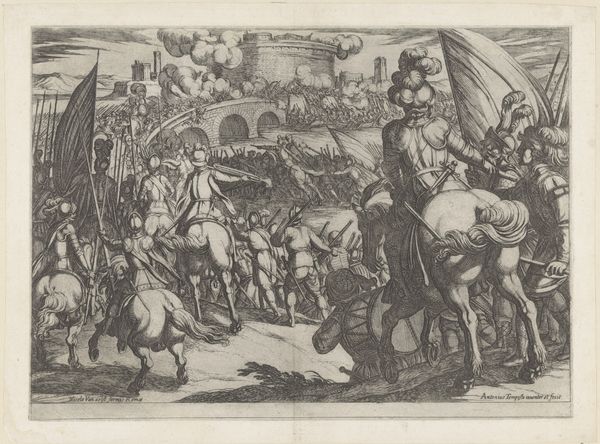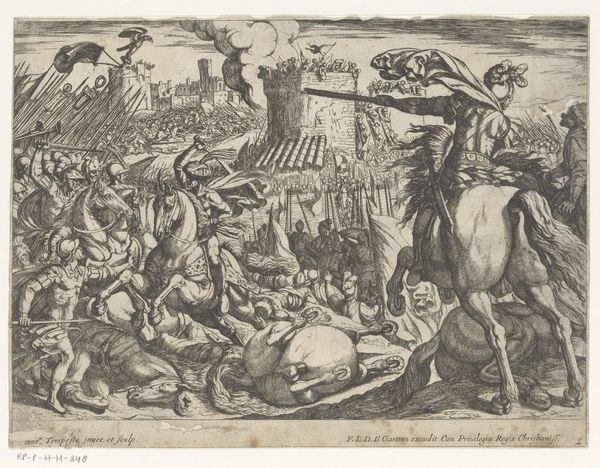
Adulthood (Evening) from The Four Ages of Man and Death with the Last Judgment 1575 - 1619
0:00
0:00
drawing, print, engraving
#
drawing
#
allegory
#
baroque
# print
#
landscape
#
figuration
#
horse
#
men
#
history-painting
#
engraving
Dimensions: Sheet: 8 15/16 x 12 5/8 in. (22.7 x 32 cm) Plate: 8 11/16 x 12 3/16 in. (22 x 31 cm)
Copyright: Public Domain
Curator: What an intriguing piece. This is "Adulthood (Evening) from The Four Ages of Man and Death with the Last Judgment," a print made between 1575 and 1619 by Hieronymus Wierix. It's currently held at the Metropolitan Museum of Art. Editor: It feels like a strange dream. A very crowded, slightly unsettling dream with… a lot going on. Is it me, or is there an almost claustrophobic sense created by all those figures packed together? Curator: Absolutely. Wierix, working in the late 16th and early 17th centuries, was deeply embedded in a culture grappling with mortality and morality. This print is allegorical, showcasing adulthood as a journey led by various vices, all hurtling toward death. Think about the sociopolitical context—the Reformation, religious wars—images were potent tools for moral instruction. Editor: Vices indeed! The details are just…wild. There’s the figure pouring out a pot of coins labeled "Waste", a lady driving ahead riding an animal of some sort whose flank is adorned by different faces in theatrical masks—and right in front, someone on crutches falling over as if his last moment. It definitely speaks of a time concerned with its relationship to pleasure and pain. But does it hold any pleasure still? Or is it plain doom? Curator: Well, the visual elements serve as both warning and critique. Note how the cart seems to be steered toward oblivion in the background—perhaps suggesting that earthly concerns lead humanity toward self-destruction. The history painting tradition often used such symbolism to underscore the precariousness of human life, given that patronage, for such themes, often came from church powers, a moral message being delivered along with aesthetic value, that is. Editor: I suppose in those days art wasn’t just art, it was sermon too. Even the landscape seems to agree; barren, dry… very little sign of respite in nature there. Wierix definitely isn't pulling any punches, huh? Curator: Not at all. The density and the detailed engraving create an overwhelming sense of moral anxiety. We're forced to confront the fleeting nature of adulthood. Editor: Knowing that now, the feeling really intensifies. This isn’t just art; it's a whole cultural moment condensed into ink and paper. Curator: Precisely, the engraving serves as a complex snapshot of a society's moral and existential fears. The historical perspective does wonders to unlock meaning within its imagery, don’t you think? Editor: Oh, without a doubt. Seeing the worries of past people in the image reminds me we aren't all that different today, just maybe differently anxious! It makes a conversation that would’ve seemed old, rather… present.
Comments
No comments
Be the first to comment and join the conversation on the ultimate creative platform.

